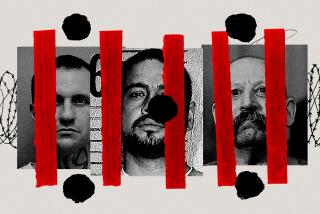Brothers who work together in the name of terror. Why so many?
When authorities identified two of the Brussels bombers as Brahim and Khalid El Bakraoui, it underscored what’s become a strangely familiar pattern – brothers working together in the name of terrorism.
The Belgian-born men – both believed to have died in Tuesday’s deadly bombings – are the fourth set of brothers who allegedly worked together in some of the most recent and chilling attacks.
Less than a week ago, the most wanted suspect in November’s Paris attacks was arrested in a shootout with police in the Belgian capital. Salah Abdeslam was considered a suspect after his older brother, Brahim, blew himself up at a bar as part of a series of coordinated attacks that killed 130 people.
Said and Cherif Kouachi, the sons of Algerian immigrants, were identified as being responsible for the Charlie Hebdo massacre in Paris in January 2015 that left 12 people dead.
Dzhokhar and Tamerlan Tsarnaev, two Chechen brothers who had immigrated to the U.S., bombed the Boston Marathon in 2013, killing three people and leaving more than 260 wounded.
Full Coverage: Terrorist attacks in Brussels >>
Six of the 19 hijackers who took part in the Sept. 11, 2001, terrorist attacks in New York City were brothers. And last year, Sheheryar Alam Qazi and Raees Alam Qazi, two South Florida brothers who were born in Pakistan, were convicted of plotting to use weapons of mass destruction on New York City landmarks.
Brothers crop up frequently in the history of terrorism, said John Horgan, a professor of global studies and psychology at Georgia State University.
“We’ve seen it across the spectrum of ethnic and nationalist terrorist organizations, from the IRA and the Tamil Tigers, right up to today’s jihadist movements of Al Qaeda and Islamic State,” he said. “It’s common, but experts don’t pay much attention to it.
“We’re woefully behind when it comes to understanding family dynamics and terrorism,” he added.
NEWSLETTER: Get the day’s top headlines from Times Editor Davan Maharaj >>
Investigating the nature of such close-knit relationships is becoming increasingly significant for authorities as a new breed of terrorist works independently of larger groups.
“The only way we can identify terrorist groups is by observations of those who are close to them,” said John Cohen, professor at the Rutgers School of Criminal Justice in Newark, N.J., and a former counter-terrorism coordinator at the U.S. Department of Homeland Security. “If family members are drawn into the plot, we’ve now lost significant detection capabilities.”
Sibling ties are common among those who are drawn to domestic terrorism, as well as those who travel to join terrorist groups in countries such as Syria and Iraq.
Often brothers tend to become involved in terrorism because they share a close bond and are subject to similar environmental influences. According to Horgan, they may have other family members who are radicalizing them, they may spend a lot of time with the same people, and they may look at the same kind of material online.
“Becoming involved in terrorism can be a rite of passage in certain families,” he said. “Older siblings often have such an effect on their younger siblings that they want to join them, they want to be part of this adventure,” Horgan said. The phenomenon is not restricted to brothers.
In 2014, 16-year-old twin sisters Salma and Zahra Halane fled their home in Manchester, England, to join jihadists in Syria. Authorities believe they were radicalized by their brother, Ahmed.
In San Bernardino, a married couple, Syed Rizwan Farook and Tashfeen Malik, opened fire at a holiday party at the Inland Regional Center in December, killing 14 people and injuring 22.
For terrorist organizations, close family members are more attractive than lone individuals -- for psychological as well as operational security reasons.
“The latter tend to be far more likely to be viewed as potential spies or potential infiltrators,” Horgan said. “If you have a pair of siblings, the chances are they’re in it for the right reason.”
In a terrorist group, based on solid group psychology, siblings can offer each other intense levels of support when they encounter stress.
“Siblings have a psychological bond,” Horgan said. “They might feel ‘I’m not going to let my brother down or disgrace his memory.’”
Experts believe that many terrorist organizations rely on an “older brother figure” who converts a sibling and leads the planning. In the case of the Boston Marathon bombing, defense attorneys for Dzhokhar Tsarnaev argued that he had been under the sway of his older brother.
“If you look at the two Tsarnaev brothers, their level of radicalization differed to some degree,” Cohen said. “Often one person is the stronger personality and they take someone who is vulnerable and push over the edge of violence. We’re still figuring out exactly the dynamics of that relationship.”
Special correspondent Jenny Jarvie is based in Atlanta.
Join the conversation on Facebook >>
MORE ON THE BRUSSELS ATTACKS
Brussels suicide bombers fit familiar profile; links to Paris terrorist attacks seen
The Brussels attack victims were from all over the world. Here are some of their stories.
Brussels attacks also shatter confidence in Europe’s open borders
More to Read
Sign up for Essential California
The most important California stories and recommendations in your inbox every morning.
You may occasionally receive promotional content from the Los Angeles Times.











